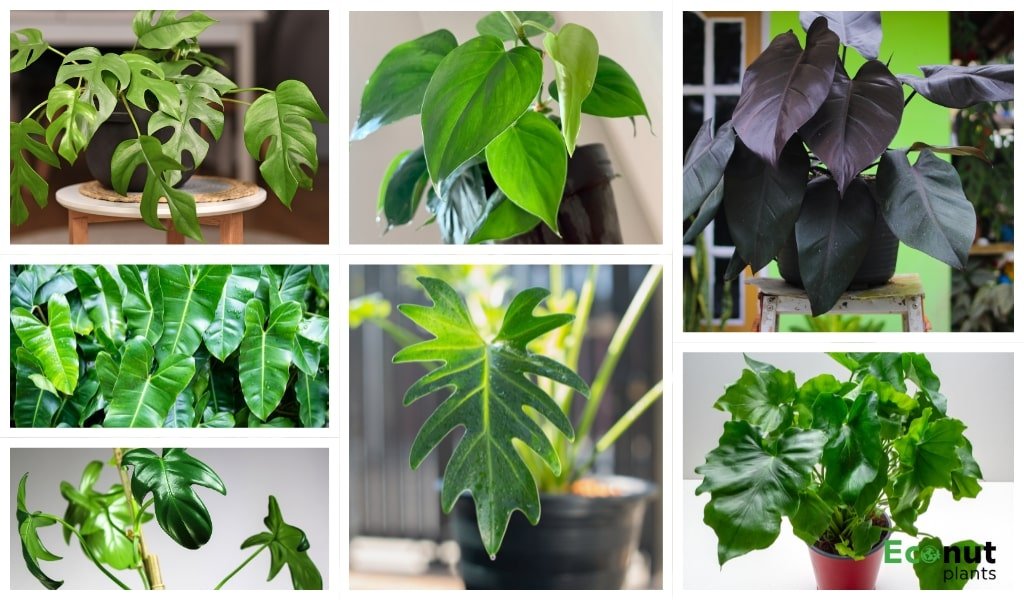Worldwide, there are around 450 different types of philodendrons. Known for their wide range of colours, sizes, and textures, these wildly popular tropical plants are grouped based on their growth behaviour.
These tropical aroids are among the most well-liked and widely kept houseplants because they thrive in typical home temperatures and humidity levels. Additionally, many of people favour indirect, bright light, which is typically simple to produce in interior spaces.
We’ve collected an extensive list of our top 25 philodendron types that will add brightness to Indoor area.
1. Golden Violin Philodendron
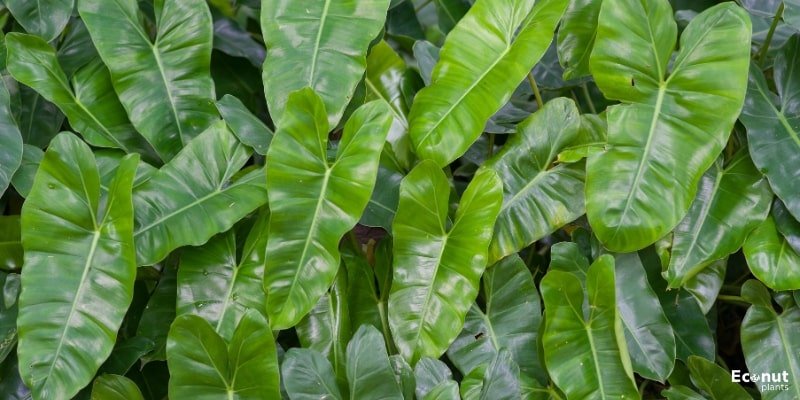
Scientific Name: Philodendron bipennifolium Aurea
The leaves are shaped like violins and grow to almost a foot and a half in length in lemon-lime colours. Like many philodendron plants, it’s a climbing plant that may reach heights of over five feet. It needs watering every week or two and indirect light.
2. Brasil Philodendron

Scientific Name: Philodendron hederaceum ‘Brasil’
The popular heartleaf philodendron is grown by the Brasil philodendron, which is identified by its lime green to yellow variegation. Its ease of maintenance is an additional benefit! It is important to keep this philodendron in an area with strong, indirect light because low light will cause it to lose its variegation.
3. Philodendron Micans
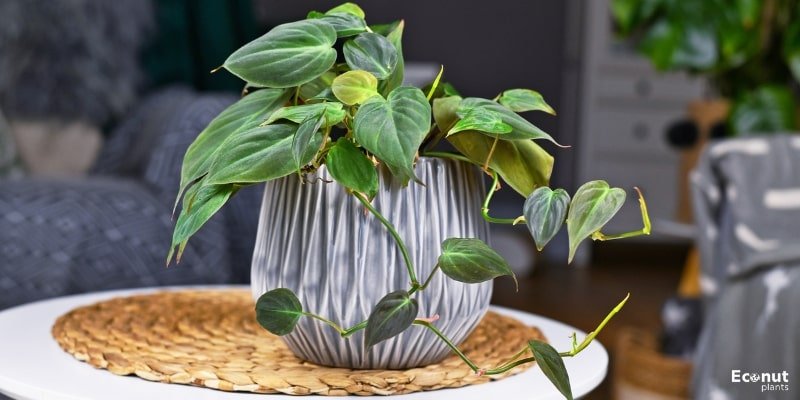
Scientific Name: Philodendron hederaceum var. hederaceum
The velvety, heart-shaped leaves of Philodendron Micans can be identified by their special bronze-to-green iridescence. Often, the leaves have a deep, mossy green hue with subtle crimson undertones.
It is a vining plant that trails or climbs gracefully, which makes it appropriate for vertical displays or hanging baskets. It grows well on well-draining soil with moderate to brilliant indirect light, native to the jungles of Central America. With a trailing growth habit, this low-maintenance cultivar gains from periodic trimming.
Philodendron Micans are a popular choice for plant aficionados looking for a unique, visually appealing, and somewhat dark addition to their indoor settings because of their seductive leaves and adaptability.
4. Bernardopazii

Scientific Name: Philodendron Billietiae
Hemiepiphytic plants, like the Billietiae, have roots that are exposed to the ground for a portion of their lives. Native to French Guiana, Guyana, Brazil, and Costa Rica.
Its leaves are really beautiful, even though this philodendron plant can reach a height of five feet. Because they may grow up to be three feet long and ten inches wide, those who enjoy gardening should make sure their Billietiae have an abundance of room. This type will produce white or off-white flowers when it blooms outside of its natural habitat if given the right care.
5. Black Gold Philodendron
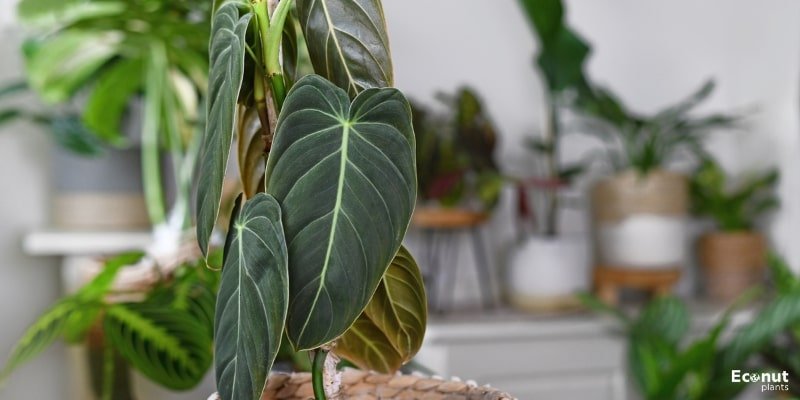
Scientific Name: Philodendron Melanochrysum
The Black Gold Philodendron, a bigger variant of Philodendron micans, has dark leaves with gold flecks scattered throughout. This climbing philodendron can grow up to 1.2 meters tall and has leaves that can reach a length of 60 cm!
While the Black Gold requires the typical habitat that philodendrons prefer, wet soil is the one thing that it cannot withstand. Water your plants just when necessary, and make sure your planting mix drains properly.
6. Red Leaf Philodendron
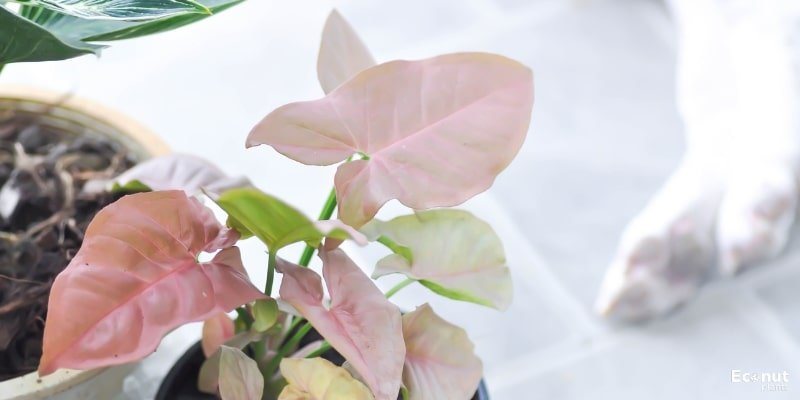
Scientific Name: Philodendron erubescens
It’s also known as Pink Princess, and it’s the most adorable variety of philodendron. The unique feature is the large, coppery leaf. The leaves might be pink, dark green, or black in colour. It’s one of the nicest types of philodendron!
7. Philodendron ‘Imperial Green’
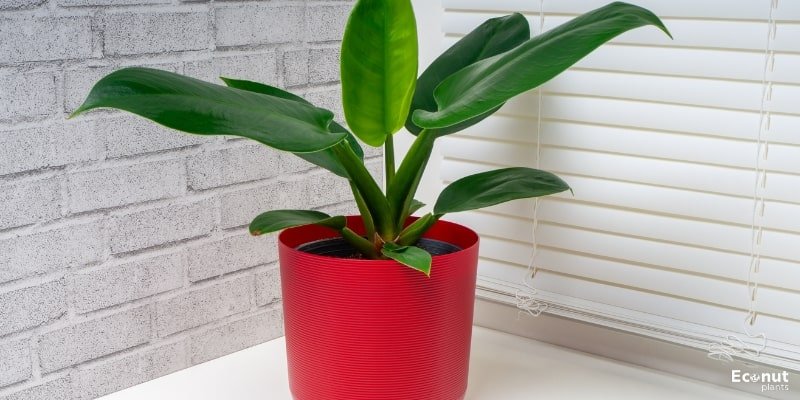
Scientific Name: Philodendron erubescens
With its broad leaf and vivid green colour, this lively philodendron can grow to remarkable dimensions. Its close-cropped foliage makes a great centerpiece.
More indirect light than most Philodendron species prefer will not harm the plant. Even though the Imperial Green may climb, many cultivators prefer to let it grow as a clumping shrub; when fresh leaves emerge, they are light in colour, but as they mature, they darken, and when they are grouped together, the different shades give interest.
Unlike the commonplace heart-shaped Hederaceum, Philodendron imperial green is far more accessible and a great specimen for an aspiring collector. Also worth examining is the Imperial Red variety.
8. Atom Philodendron
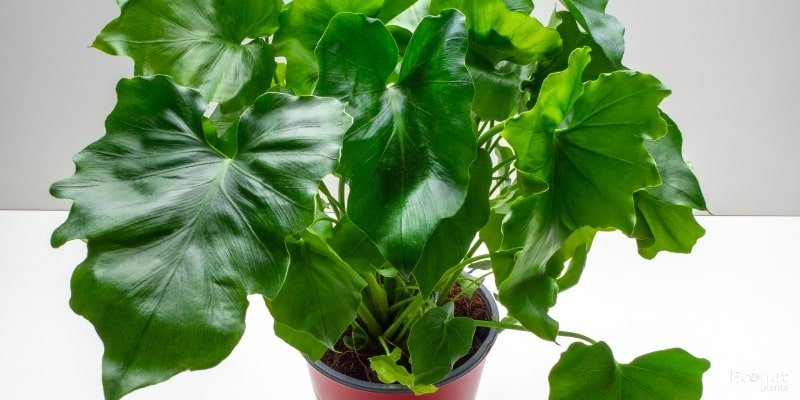
Scientific Name: Philodendron bipinnatifidum’Atom’
“Atom,” sometimes known as “Super Atom,” has glossy, dark-green leaves and an upright growth habit. Its veins are thick and light green, and the edges of the leaf grow lobed with age.
When fully grown, it is frequently confused with P. selloum and mislabeled as such. Actually, this is a dwarf cultivar of P. bipinnatifidum, reaching a maximum height and width of roughly three feet.
A live plant in a four-inch container is available from California Tropicals on Amazon if you’d like to check out this budding star.
9. Philodendron Xanadu
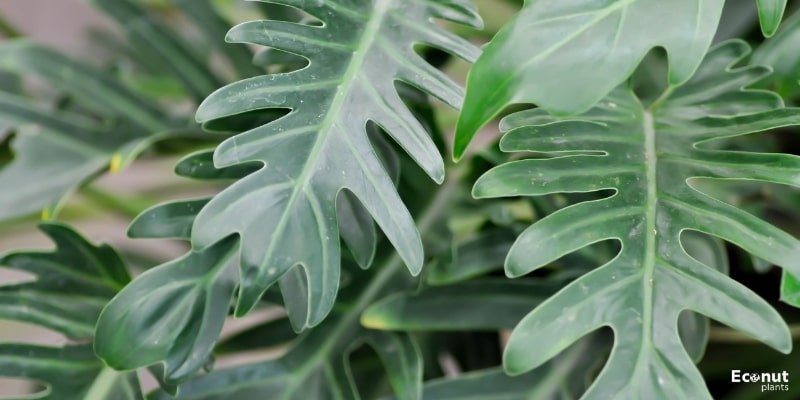
Scientific Name: Philodendron Bipinnatifidum
The presence of Philodendron Xanadu is very amazing. The leaves have lobes that are very deep, split, dark green, and very long. They have a sculptural, robust, and powerful appearance. A circular “dome” of eye-catching leaves is formed by the growth of individual leaves on long, robust stems that emerge straight from the ground.
It makes a striking impression in any space. No visitor can overlook it, and in a large setting, it may even take center stage.
10. Creeping velvet philodendron
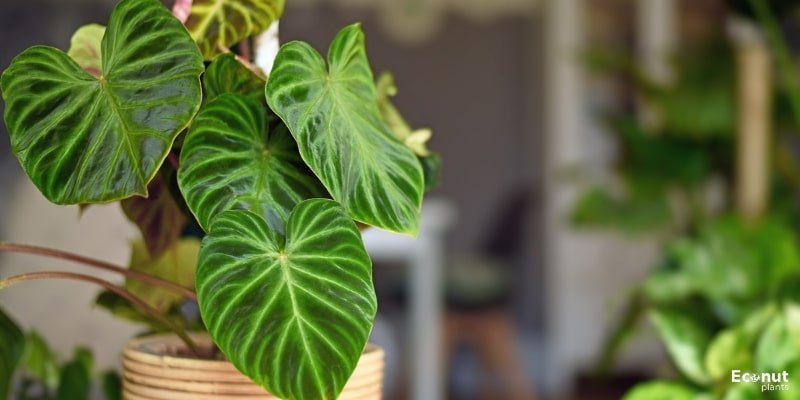
Scientific Name: Philodendron gloriosum
The heart-shaped leaves of Hilodendron gloriosum have vivid veins that contrast sharply with their dark green background. This is a creeping plant that grows terrestrially. As per its native environment, this particular kind of Philodendron needs a partially shady area within the room.
In every hanging pot, the creeping shoots become a focal point. When the rhizome is planted, it should still be slightly exposed. Soft green, heart-shaped leaves with striking veining are characteristic of Philodendron gloriosum.
11. White wave

Scientific Name: Philodendron Birkin
Loved for its lovely leaves with white stripes, the philodendron white wave, or Birkin, is a popular choice. While most philodendrons can withstand low light levels, this plant will thrive in a bright, humid bathroom.
“No leaf ever looks the same, so it’s a real showy beauty with white stripes lining the glossy leaves,” Gutierrez states. “It’s an easy and very intriguing houseplant.”
12. Ring of Fire Philodendron
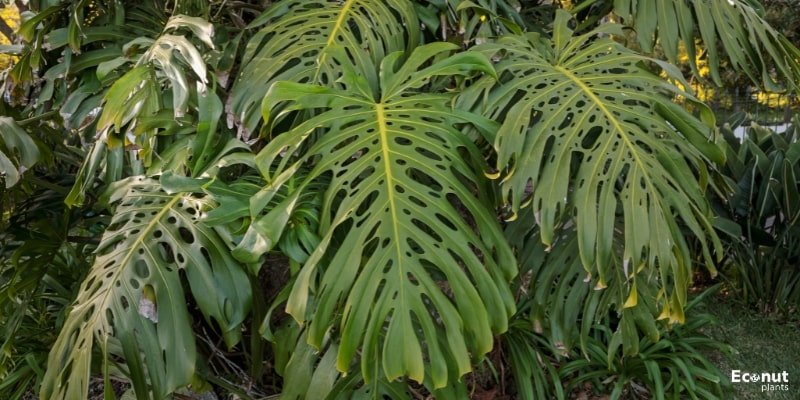
Scientific Name: Philodendron wendlandii x P. tortum
The Ring of Fire philodendron can be the ideal plant for you if you’re searching for something to add a little colour to your home. Its leaves come in a variety of hues, including orange, red, green, and cream. Considering that this plant climbs, you might want to trellis it! Maintain it in indirect light, medium to bright.
13. Philodendron ‘Prince of Orange’
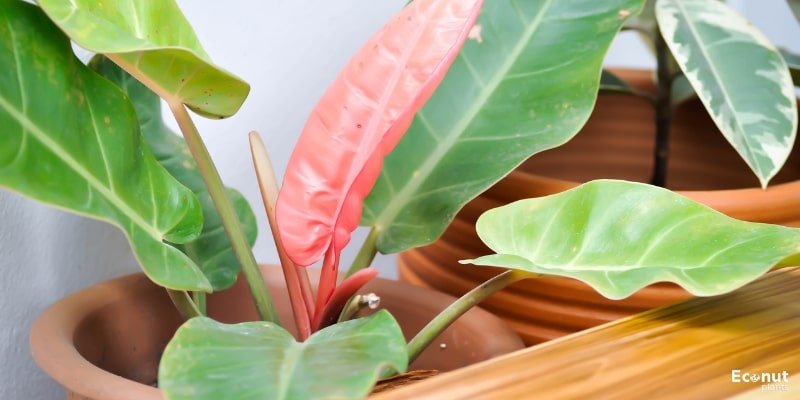
Scientific Name: Philodendron erubescens ‘Prince of Orange
The golden-orange foliage of a Philodendron erubescens cultivar known as the “prince of orange” gives rise to its name. This self-heading philodendron produces new leaves that emerge in yellowish-orange hues that gradually intensify to bright green.
A mature orange philodendron can reach heights of three feet and widths up to twelve inches for each of its individual leaves. To maintain the vibrancy of its hues, place this plant in an area that receives bright, indirect light.
14. Philodendron Melinonii

Scientific Name: Philodendron melinonii Brongn. ex Regel
This member of the Philodendron family is a relatively large, non-vining plant. It is a low-maintenance plant that can tolerate a variety of lighting situations.
With consistent, moderate watering and slightly increased humidity, the Melinonii thrives in both indoor and outdoor settings, though it is undoubtedly most suited as a floor plant. It may grow in a variety of lighting conditions, but strong, indirect light will yield the best, most ideal growth. Use Philodendron melinonii to give your home that much-needed tropical flair!
15. Bipinnatifidum
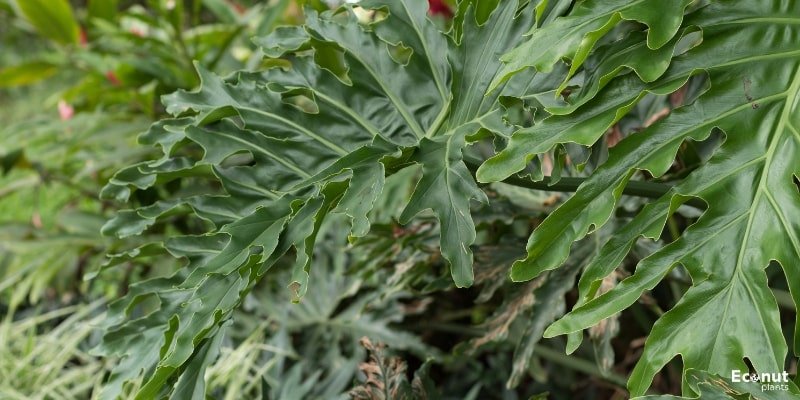
Scientific Name: Philodendron Bipinnatifidum
Although it is native to Argentina, Bolivia, Brazil, and Paraguay, the Bipinnatifidum is also found in several southern U.S. states with temperate climates. It offers enough growing conditions and gorgeous white blooms in the spring and summer.
Growing outdoors versus indoors causes a noticeable growth difference since this philodendron takes up its environment. Its natural height is fifteen feet, but as an indoor plant, it can grow to a height of five to six feet.
In contrast to other types of Philodendron, the Bipinnatifidum prefers moist soil with some standing water for best growth. Any house or place of business can feel tropical thanks to its distinctive, broad, vibrant leaves.
16. Philodendron ‘Bob Cee’
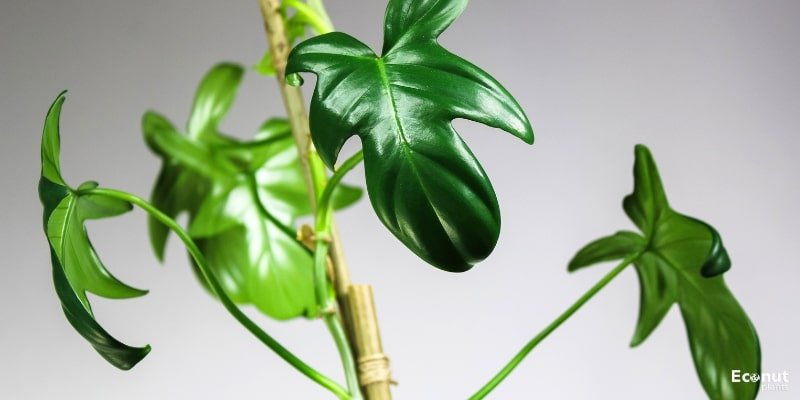
Scientific Name: Philodendron hederaceum x squamiferum ‘Bob Cee’
The “it” plant in the Philodendron plant family is the Philodendron “Bob Cee,” which has elongated stems and heavily lobed, dark green leaves. Despite its rarity, this climber adds a tropical touch to discussions about home interior design.
Loved by its owners for being low-maintenance, the “Bob Cee” is becoming more and more popular among plant connoisseurs due to its unusual and statuesque appearance.
17. Moonlight Philodendron
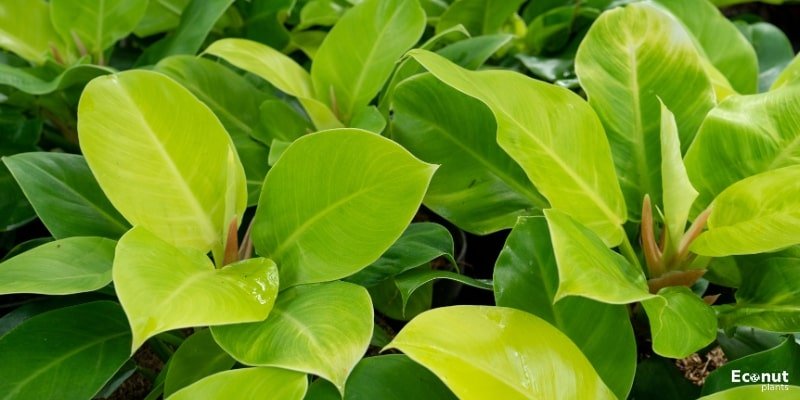
Scientific Name: Philodendron hederaceum ‘Moonlight’
The brilliant green foliage of this hybrid heartleaf philodendron can create a striking focal point in any arrangement. It is not a vining type, so it can’t be grown on trees, but it can grow rather well in a container. “Moonlight” is among the most beautiful philodendron types!
18. Philodendron ‘Burle Marx’
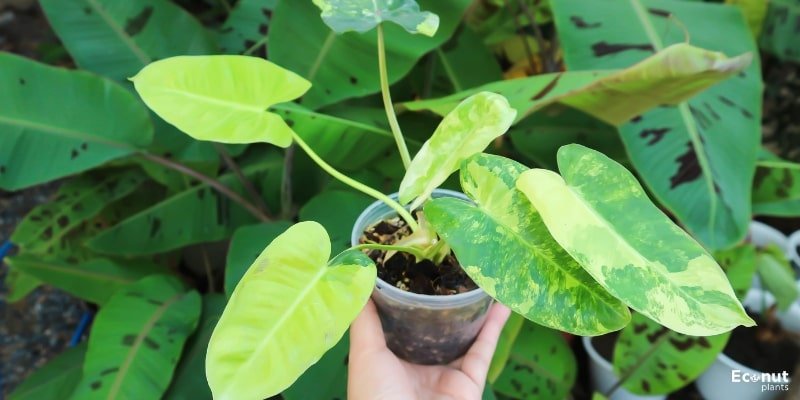
Scientific Name: Philodendron erubescens
This bold favourite is an elegant study in roughness. The plant yields a large quantity of long, paddle-shaped, glossy green leaves with deep lobes. The foliage features delicate pale veining and gradually undulates along its length.
It grows in upright fashion, creating festive bunches that are roughly two feet high and wide. Hardy and prolific, the Burle Marx thrives indoors on standard Philodendron care and is a common groundcover in warmer climes.
The basic variety can be easily found and is reasonably priced. Among the highly sought-after variegated hybrids is the “Burle-Marx Fantasy,” which has a mosaic-like design.
19. Blushing Philodendron
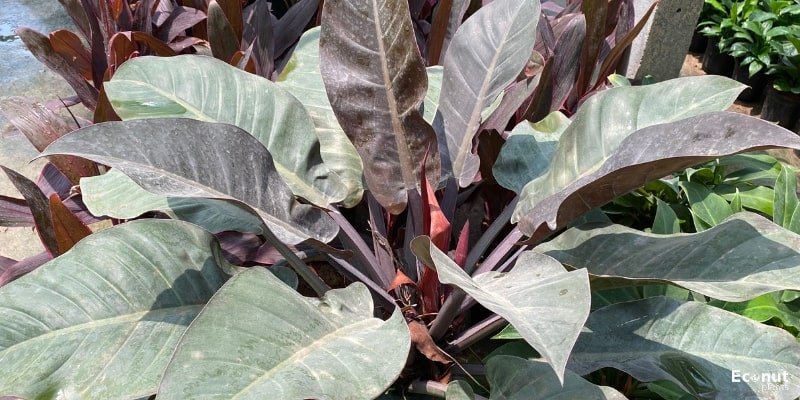
Scientific Name: Philodendron erubescens
Another well-liked type is the blushing philodendron. Its leaves are a deep green hue and have an elongated heart shape, giving it a robust appearance. Additionally, the undersides of the leaves themselves and the stems themselves stand out since they are purple in colour.
These spread out, slanting on the stems, to create enormous, striking bushes with incredibly luxuriant foliage. In warm areas, you may even grow this type on a patio or balcony. It’s great for living rooms and offices.
20. Philodendron McColley’s Finale

Scientific Name: Philodendron Erubescens
The rusty red leaves of the Philodendron McColley’s Finale eventually become a brilliant green hue. It just needs watering once every two weeks, and this philodendron can withstand low light levels.
21. Philodendron Black Cardinal
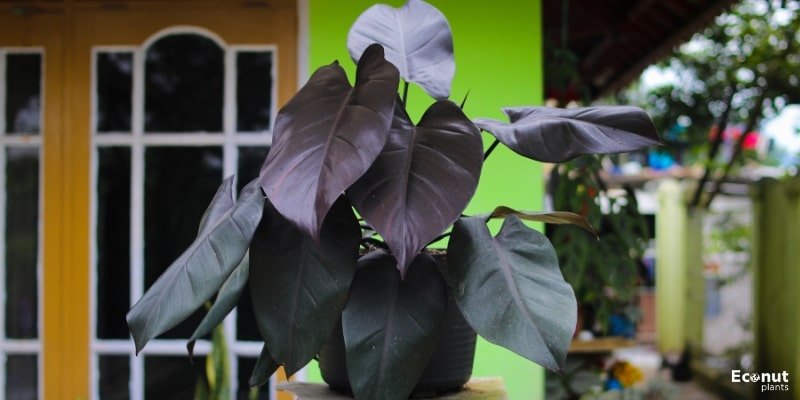
Scientific Name: Philodendron erubescens ‘Imperial Green’
The black cardinal philodendron is a medium-sized, self-heading, low-maintenance plant with huge, variably coloured leaves. When they mature, newly sprung leaves turn from burgundy to green and finally black. Although direct morning and evening light helps to bring out the dark colours of this philodendron, it thrives in bright, indirect light.
22. Philodendron Silver Sword
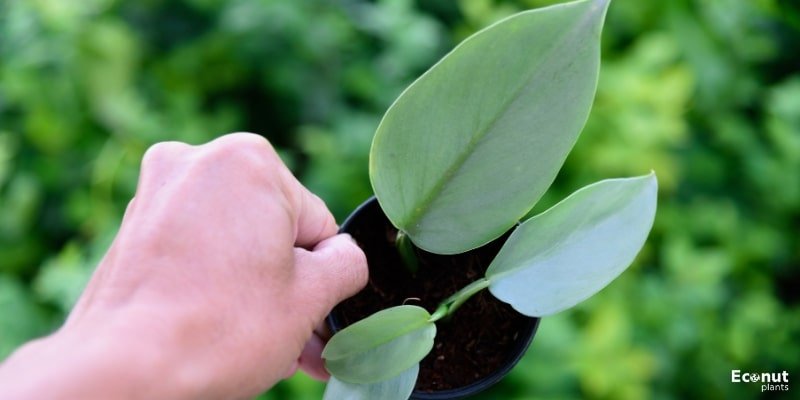
Scientific Name: Philodendron hastatum
With its sharp, sword-like silver leaves, the Silver Sword lives up to its name and displays its beauty. One of the climbing philodendrons, it is admired for its distinct and seductive beauty.
As the plant grows, it develops trilobes and becomes longer than previously, giving whatever area it may be placed a touch of the tropics. In addition to being pleasant, the Silver Sword prefers medium-indirect light. It can reach a minimum height of ten to fifteen feet.
23. Brazil

Scientific Name: Philodendron Brazil
The hybrid Brazil philodendron, also known as Philodendron brasil, is indigenous to the Americas, Central America, and the Caribbean. Its vivid green and yellow hues, which are reminiscent of the Brazilian flag, explain how it received its name. But if this plant doesn’t get enough food and attention to grow, it can go back to becoming a heartleaf.
This trailing plant looks great on a table with climbing support, in a hanging basket, or on a shelf. Brazil is one of the less picky philodendron kinds available, despite its appearance, suggesting it will need ongoing care and attention.
Plant enthusiasts may notice green and white blossoms when Brazil gets a chance to bloom, though indoor blooming is uncommon.
24. Philodendron White Knight

Scientific Name: Philodendron erubescens ‘white knight’
The white knight philodendron is a highly sought-after (and expensive) plant, much like the pink princess philodendron. Light green and bright white variegations splatter on its tall, pointed green leaves.
This philodendron needs high humidity, bright, indirect light, and continually moist soil to maintain its vibrant white variegation.
25. Philodendron ‘Florida Ghost’
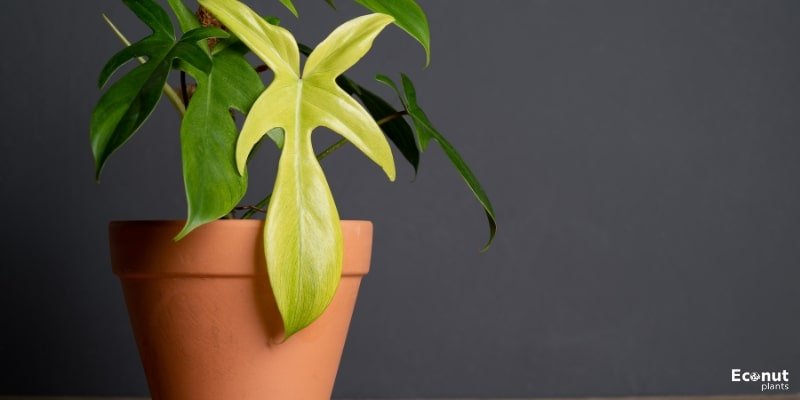
Scientific Name: Philodendron squamiferum x pedatum ‘Florida Ghost
The philodendron Florida ghost derives its name from the way its leaves are shaped and from the way young leaves appear white, giving the impression that they are tiny floating ghosts. It is a sought-after plant for collectors and is valued highly due to its rarity.
However, if you do discover one, it is rather simple to keep content indoors. Just make sure the soil is continually moist, there is high humidity, and bright, indirect light is provided for your Florida ghost. For an added burst of colour, look for the variegated varieties.

